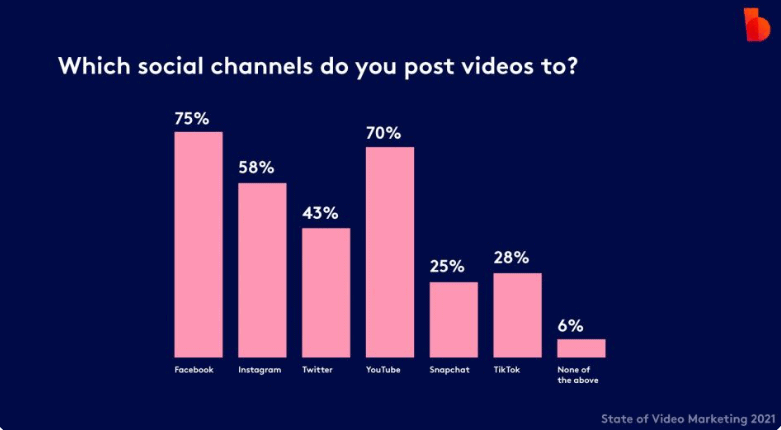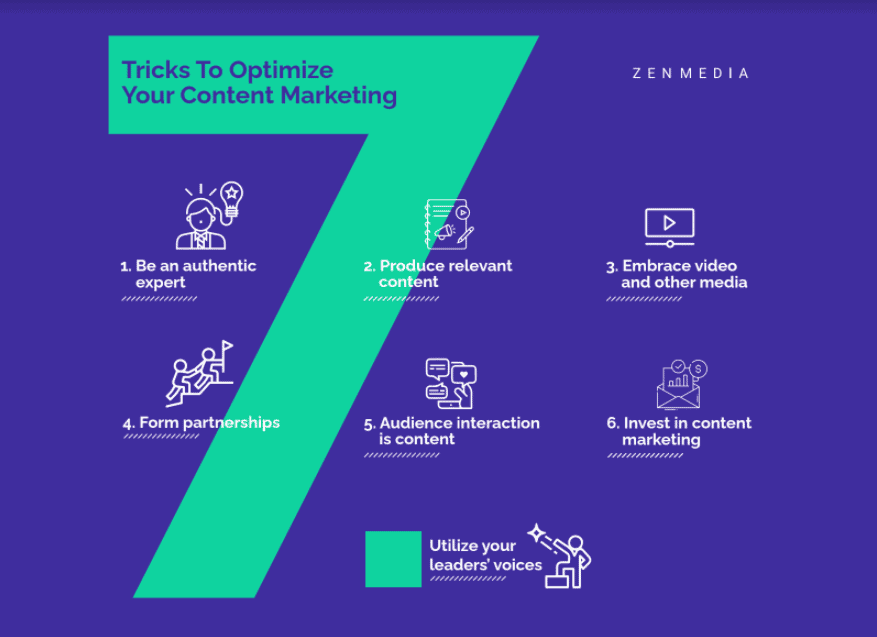The internet never sleeps, and as any B2B content marketer knows, that means it needs to be fed—constantly.
And what does it like to eat most? High-quality content. That’s the stuff that will increase your reach, ramp up your lead gen, and ultimately, convert more customers.
But how are you supposed to create enough content consistently, when your marketing team has so much else to think about—paid ads, public relations, social media marketing, etc.?
One critical part of the equation is repurposing your existing content. When you write a blog post, for example, you don’t want to just post it and let it sit there. There’s so much more you can get out of it while maximizing both your ROI and your team’s time.
Here are 10 excellent ways to repurpose your existing content.
Break blog posts up into social posts
Have a blog post full of meaty, substantive content? Give yourself a week’s worth (or more!) of content by taking out chunks and repurposing them for various social platforms.
Remember, you don’t always have to link back to the original blog post in your social posts. Instead, try linking to your contact page, to a separate but related piece of content, or gated content that you want to drive downloads for.
Create multiple short videos out of one longer video
If you’ve got videos on your YouTube channel or your website that you want to repurpose and refresh, a great tactic is to break them up into shorter videos.
There are a couple of immediate benefits to doing this: One, you can post them on TikTok, Instagram Reels, and/or YouTube Shorts, which allows you to better reach the segment of your audience who watches videos primarily on their mobile devices (which is most people—according to Biteable, 75% of all video plays are on mobile).

And two, you get more video content that you can post, share, and link to, boosting your online presence.
To be fair, repurposing video takes more time than simply pulling out a few quotes from a blog post to share on social.
That’s why it’s a good idea to use a video editing tool—and one that incorporates AI is even better. At Zen, we use Kamua, which speeds up our editing process considerably.
Kamua lets us automatically transform our horizontal videos, created for YouTube, to vertical ones that work best on TikTok and Instagram. It also uses AI to track the action in a video, so you don’t crop out what you want to include. Captioning videos is also a breeze.
Turn blog topics into podcast topics
Working some B2B tech PR by pitching your CEO as a guest on podcasts? Develop sample talking points from your blog posts, and boost both your content marketing and your PR efforts all at once.
If you’re developing your own branded podcast, your blog, research reports, and whitepapers are all excellent resources to mine for topics.

Break up your online course into whitepapers
Online courses saw skyrocketing interest during the pandemic, with the top three educational course providers registering as many new users in April 2020 as they did during the whole of 2019.
If you’ve got a popular online course, consider breaking each section into a whitepaper. Those whitepapers can then become downloads in exchange for an email address, helping you grow your email list. Also, those users who like what they find in the whitepaper may also, later, sign up for your course.
Post videos with captions and transcripts on your blog
Do you have transcripts or captions on your videos?
Since 83% of people watch videos with the sound turned off, according to a study by Verizon, adding captions and creating transcripts means you’re more likely to stop users’ scrolling and get them to engage with your video.
And you don’t have to pay for an expensive service, either. Video editing tools are starting to include auto-captions (Kamua offers auto-captioning in multiple languages), which can make the process much faster and easier.
Once your video is captioned and you have a full transcript, you can post it on your blog.
Another reason captions and transcripts are important? Search engine crawlers can’t watch videos, but they can read text. Including the text version of your video will help Google index it, so it can show up in searches for relevant keywords.
Refresh, update, and republish old articles and blog posts
If you’ve got instructive content on your blog or site, chances are it could do with a refresh.
All you have to do is add a note at the top of the article or blog post noting when the content was originally published, and when it was updated. Then, simply go through the article and update any old information.

As an example: Facebook Ads has changed dramatically in the past five years. If you wrote a post about how to use the ad manager back then, you’d have plenty to update today. The structure, introduction, and conclusion could likely all stay the same, but you would need to update any step-by-step instructions, screenshots, and links.
This is a relatively quick way to generate additional long-form content, which will help with both your site’s SEO and traffic.
Convert data from a report or study into a data visualization
Data visualizations are incredibly popular, shareable forms of content—they do especially well on sites like Reddit and Quora, although they’re also excellent to include on your blog or website.
Tools like Visme, Tableau, and Infogram make it easy to take your existing data and turn it into something visually appealing and easy to digest.
These are especially helpful for B2B tech companies, as the B2B buying journey is long, non-linear, and research-heavy. The more information you can offer potential B2B buyers upfront, before they’ve even reached out to you, the better a chance you have of making the sale.
Create an infographic
Like data visualizations, infographics are hugely popular ways to visually present information in an easy-to-digest format.

Unlike data visualizations, infographics often include images, plenty of text, and can be used to explain concepts and ideas—not just data.
Reuse content in an email series
If you’ve got a course, a webinar, or an “ultimate guide” style blog post, break it up into bite-sized pieces and turn it into an email series!
This is different from your typical email marketing, as it would be a self-contained daily or weekly set of emails that your site visitors would sign up for. Here are a few example ideas that would work well for B2B tech:
- 21-Day Brainstorming Challenge
- Your One-Month-till-Launch-Day Product Launch Checklist
And, of course:
- 10 Ways to Repurpose Your Content
Turn a whitepaper into a presentation
Whitepapers and other research-heavy content can be converted into presentations and shared as a SlideShare. By condensing the language and adding some imagery, bullet points, and otherwise breaking up the content, you can create a powerful presentation that highlights the most important elements you want to convey.
Presentations are ideal tools to use for customers who are in the decision stage of the buying journey—not to mention a way to get your whitepaper content in front of users who prefer visual content, rather than reading pure text.
Repurposing content is an important strategy for every B2B content marketer. Without it, you’re stuck creating new content day in and day out; with it, you can adapt the content you already have to brand new audiences, drastically increase your content output, and get the highest ROI possible out of all your content efforts.




